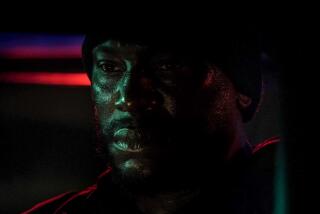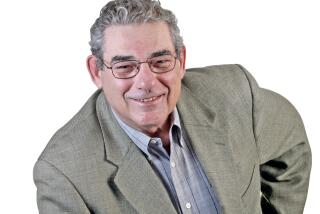Adrenaline faded; sadness lingers
- Share via
The order from the city desk to the reporter was direct: The 1992 riots were out of control, neighborhoods were going up in smoke. The reporter was to go to hot spots and get the story.
Doing so meant suppressing his own anxieties about venturing into familiar neighborhoods suddenly transformed into chaotic danger zones. But he was armed with adrenaline.
“This is what it’s all about,” the reporter later declared in a 1992 American Journalism Review article about journalists on the “firing line.” He downplayed a scary moment when a man pointed a shotgun at his fleeing car and fired four rounds that missed: “If we can’t handle this, we can’t handle much of anything,” the reporter said. “Being part of the story was its own reward.”
Coming across that journalist’s perspective today is a bit unnerving, because he is me.
I don’t really feel connected to the views of that guy, who was then just shy of his 10-year anniversary at the paper. I certainly don’t remember being that pumped up. My reflections are a labyrinth of images so surreal and awful I sometimes wonder, “Did that really happen?”
But I know it did, and that inescapable truth reawakens my sadness about the violence that laid waste to much of the beloved community where I had grown up.
Now as I tour the areas where I spent many of those frenzied nights, mental snapshots emerge like the remnants of a nightmare. I pass a pawnshop on Jefferson Boulevard and can still visualize the manager’s clenched jaw as he surveyed his shattered windows and looted shelves. I pass hospitals, remembering how helpless I felt taking notes while witnessing the anguish of relatives outside emergency rooms waiting for word about their wounded loved ones.
Other images are more eerie: the smoldering hulks of corner markets where I bought groceries and comic books; the popular Fedco department store on La Cienega and Rodeo Road, where Target now sits, fenced off and closed for business.
Those details spilled into the stories being churned out by Times reporters and editors. But as the relentless coverage continued, the newsroom grappled with its own dilemma that echoed the racially charged atmosphere outside its walls.
Some staffers pointed out that several African American reporters from suburban sections — I was among them — were hastily dispatched into trouble spots while the predominantly white Metro staff stayed in the newsroom. Those reporters were “cannon fodder,” they charged.
When the danger had largely subsided, most of us were unceremoniously sent back to our offices without thanks. The controversy about diversity — and the lack of it — sparked heated staff meetings, and top editors moved quickly to increase the percentage of journalists of color.
That was then.
All this month, media attention has centered over conditions in post-riot Los Angeles — the progress, or lack of it. Pockets of ruin and decay remain in some communities. I was disheartened to return to the corner near my childhood home where a supermarket once stood before it was torched. I found only an empty lot surrounded by a canvas-covered fence. That store, Sam Newman’s Market, had been an anchor of the community, and it never returned.
Still, there are many signs of encouragement. Improved community relations with police have generally eased the ominous tension on the streets. Starbucks and national restaurant chains such as Denny’s have established a presence.
Even more startling is the major development that has sprung up in the last year or so. A lunch appointment a few weeks ago brought me to a Buffalo Wild Wings in the Crenshaw Plaza, adjacent to Baldwin Hills. An attractive, spacious sports bar with numerous large TVs would have been almost unimaginable several years after the riots.
Just a few blocks away is an upscale restaurant with a patio and fireplaces that has become a popular destination. The staff is racially diverse, and on a recent Saturday evening, almost half the customers were white, dining alongside neighborhood residents.
Change has also come to the Times. It has been led by two respected editors who are men of color. Many stories about race are covered with extensive resources and given prominent play on the pages.
Still, a look at the newsroom reveals that the Times has fewer African American journalists than it had 20 years ago. Although the newsroom staff is smaller, the paper has more Asian Americans and Latinos than in 1992. But the roster of black reporters and editors could barely fill a baseball lineup. Editors pledge to change that.
It cannot come soon enough.
Greg Braxton covers television for the Times.
More to Read
Sign up for Essential California
The most important California stories and recommendations in your inbox every morning.
You may occasionally receive promotional content from the Los Angeles Times.














